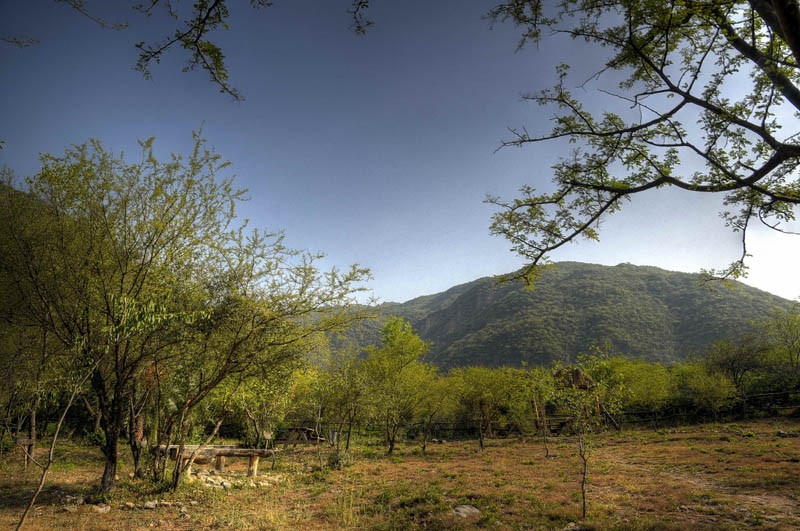
Margalla Hills National Park is awaiting primary steps for its protection even after 36 years

Thousands of people drive through beautiful Margalla Hills for recreation, but how many actually stop to think how best to protect and preserve its wildlife and flora.
The almost 40 kilometre long chain of Margalla Hills, spread over 12,605 hectares (ha), were declared the Margalla Hills National Park (MNHP) through the Islamabad Wildlife (protection, preservation, conservation and management) Ordinance 1979. Rawal Lake and Shakarparian lie within this national park. At the moment, there are 13 streams and at least 26 defined hiking trails in these hills. The notification of the MHNP was made in 1980. A view provided in 1979 ordinance was "to protect and preserve scenery, flora, and fauna in natural state."
Overall, there are more than 100 declared national parks in Pakistan to protect natural scenery and wildlife.
In 1980, when it was declared a national park, the then ruler, General Ziaul Haq, ordered to move away the Inter Services Intelligence offices situated close to now Trail #5, and opened up the area to public for recreation, education, and research.
It has been more than 36 years that a decision was made to highlight the importance of this easily accessible natural scenery. Till 2015, two boards were constituted to make and implement polices to protect the park. However, these boards merely have existed on paper; they have not met even once, according to official records.
The Capital Development Authority (CDA) has been managing the MHNP ever since its inception in 1979 under the Islamabad Wildlife Ordinance and the rules framed under it. A board was expected to oversee the management of wildlife in Islamabad first notified in 1983 but it never met. A second board was announced in 2004, that too never met, and a third one was constituted after Islamabad High Court’s intervention in 2015.
An environmentalist Prof. Z.B. Mirza filed a petition in the Islamabad High Court in 2014, stating there was extensive removal of vegetation and activities prohibited by law in that national park. Following the findings of a committee set up on the court orders, the federal government formed a new Islamabad Wildlife Management Board (IWMB) in 2015.
According to the law, the new board has the authority to execute policies, plans and programmes; it is responsible for Islamabad Zoo; it can raise funds; and is empowered to hire employees setting up its own functioning organisation.
The 16-member board including environmentalists, CDA chairman and officials, and members of parliament has met seven times.
The national park, as defined in the law, prohibits hunting, shooting, trapping, killing or capturing of any wild animal within a radius of two kilometres of its boundaries. It forbids felling of tree, any land cultivation, mining and polluting water flowing in or through it.
Public and officials of CDA have been violating these prohibitions. For the newly constituted board, it is a daunting challenge to meet without official and public will.
A previous survey about a segment of MHNP found 45 per cent of the area in bad shape, 8 per cent partially degraded and 47 per cent of the area in relatively good condition. The present condition is likely to have become much worse if degradation subsequent to the previous count is taken into account. It is estimated that over 150,000 persons are residing in the park area now, in the settlements located in the park such as Nurpur, Saidpur, Kalinjar and Saniyari, which are continually expanding. Livestock population is also increasing significantly. Many restaurants have opened here as well.
The boundary of MHNP is not clearly demarcated. Many of the original boundary pillars have been dislodged. Mining in the south-western trail of the park combined with extensive cutting of trees and bushes has resulted in landscape that barely qualifies to be a part of national park.
Commercial exploitation of MHNP has continued with a number of facilities to being awarded to private parties to operate restaurants without conducting environmental impact assessment (EIAs).
The principle of sustainable development, under which environment and development can proceed in balance, was ignored. Traffic through these hills has increased at an alarming rate, especially during weekends and festivities when thousands of people come to these spots.
The capacity of the CDA to manage the national park has severely deteriorated over time, with poor leadership, vacant staff positions, untrained staff and rampant absenteeism from duties.
The official strength of security guards deployed in the park is 52. However, "less than a dozen are seen on duty while others are absent or performing other duties assigned by CDA officers," a guard on duty tells TNS.
The IWMB now looks after the administrative affairs of the MHNP and other wildlife concerns in the capital. Along with these implementation challenges, the IWMB is facing administrative challenges to perform its legally defined functions. It has been more than nine months now that the IWMB is waiting for official approval to open a separate account for the board as per rules to raise funds and hire employees.
"The biggest challenge is to change the people’s thought process, from official to public level, and mindsets to create realisation about to protecting and conserving nature and wildlife," Vaqar Zakaria, member of the IWMB and director of the Himalayan Wildlife Foundation (HWF), tells TNS.
He feels that the approach towards environment is changing -- positively. "Another challenge is to change the official mindset from horticultural approach to preservation and conservation. We have to protect our environment, natural scenery and wildlife for better future," says Zakaria.
"At the moment, priorities of the board are to define the boundaries of Margalla Hills; start organisation, hire more people and make its functioning smooth," he say. We are in initial phase and we have medium and long-term goals that include finalisation of the management plan for the MHNP, prepare action plan and implement a development plan."